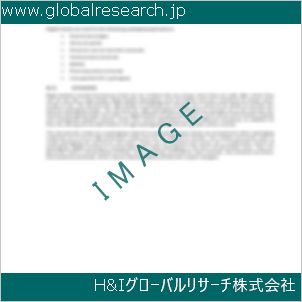1 Fuel Sensor Market Overview
1.1 Product Definition
1.2 Fuel Sensor Segment by Type
1.2.1 Global Fuel Sensor Market Value Growth Rate Analysis by Type 2022 VS 2029
1.2.2 Capacitive Fuel Sensor
1.2.3 Resistive Fuel Sensor
1.2.4 Ultrasonic Fuel Sensor
1.3 Fuel Sensor Segment by Application
1.3.1 Global Fuel Sensor Market Value Growth Rate Analysis by Application: 2022 VS 2029
1.3.2 Automobile Industry
1.3.3 Marine Industry
1.3.4 Industrial
1.3.5 Power Generation
1.3.6 Others
1.4 Global Market Growth Prospects
1.4.1 Global Fuel Sensor Production Value Estimates and Forecasts (2018-2029)
1.4.2 Global Fuel Sensor Production Capacity Estimates and Forecasts (2018-2029)
1.4.3 Global Fuel Sensor Production Estimates and Forecasts (2018-2029)
1.4.4 Global Fuel Sensor Market Average Price Estimates and Forecasts (2018-2029)
1.5 Assumptions and Limitations
2 Market Competition by Manufacturers
2.1 Global Fuel Sensor Production Market Share by Manufacturers (2018-2023)
2.2 Global Fuel Sensor Production Value Market Share by Manufacturers (2018-2023)
2.3 Global Key Players of Fuel Sensor, Industry Ranking, 2021 VS 2022 VS 2023
2.4 Global Fuel Sensor Market Share by Company Type (Tier 1, Tier 2 and Tier 3)
2.5 Global Fuel Sensor Average Price by Manufacturers (2018-2023)
2.6 Global Key Manufacturers of Fuel Sensor, Manufacturing Base Distribution and Headquarters
2.7 Global Key Manufacturers of Fuel Sensor, Product Offered and Application
2.8 Global Key Manufacturers of Fuel Sensor, Date of Enter into This Industry
2.9 Fuel Sensor Market Competitive Situation and Trends
2.9.1 Fuel Sensor Market Concentration Rate
2.9.2 Global 5 and 10 Largest Fuel Sensor Players Market Share by Revenue
2.10 Mergers & Acquisitions, Expansion
3 Fuel Sensor Production by Region
3.1 Global Fuel Sensor Production Value Estimates and Forecasts by Region: 2018 VS 2022 VS 2029
3.2 Global Fuel Sensor Production Value by Region (2018-2029)
3.2.1 Global Fuel Sensor Production Value Market Share by Region (2018-2023)
3.2.2 Global Forecasted Production Value of Fuel Sensor by Region (2024-2029)
3.3 Global Fuel Sensor Production Estimates and Forecasts by Region: 2018 VS 2022 VS 2029
3.4 Global Fuel Sensor Production by Region (2018-2029)
3.4.1 Global Fuel Sensor Production Market Share by Region (2018-2023)
3.4.2 Global Forecasted Production of Fuel Sensor by Region (2024-2029)
3.5 Global Fuel Sensor Market Price Analysis by Region (2018-2023)
3.6 Global Fuel Sensor Production and Value, Year-over-Year Growth
3.6.1 North America Fuel Sensor Production Value Estimates and Forecasts (2018-2029)
3.6.2 Europe Fuel Sensor Production Value Estimates and Forecasts (2018-2029)
3.6.3 China Fuel Sensor Production Value Estimates and Forecasts (2018-2029)
3.6.4 Japan Fuel Sensor Production Value Estimates and Forecasts (2018-2029)
4 Fuel Sensor Consumption by Region
4.1 Global Fuel Sensor Consumption Estimates and Forecasts by Region: 2018 VS 2022 VS 2029
4.2 Global Fuel Sensor Consumption by Region (2018-2029)
4.2.1 Global Fuel Sensor Consumption by Region (2018-2023)
4.2.2 Global Fuel Sensor Forecasted Consumption by Region (2024-2029)
4.3 North America
4.3.1 North America Fuel Sensor Consumption Growth Rate by Country: 2018 VS 2022 VS 2029
4.3.2 North America Fuel Sensor Consumption by Country (2018-2029)
4.3.3 United States
4.3.4 Canada
4.4 Europe
4.4.1 Europe Fuel Sensor Consumption Growth Rate by Country: 2018 VS 2022 VS 2029
4.4.2 Europe Fuel Sensor Consumption by Country (2018-2029)
4.4.3 Germany
4.4.4 France
4.4.5 U.K.
4.4.6 Italy
4.4.7 Russia
4.5 Asia Pacific
4.5.1 Asia Pacific Fuel Sensor Consumption Growth Rate by Region: 2018 VS 2022 VS 2029
4.5.2 Asia Pacific Fuel Sensor Consumption by Region (2018-2029)
4.5.3 China
4.5.4 Japan
4.5.5 South Korea
4.5.6 China Taiwan
4.5.7 Southeast Asia
4.5.8 India
4.6 Latin America, Middle East & Africa
4.6.1 Latin America, Middle East & Africa Fuel Sensor Consumption Growth Rate by Country: 2018 VS 2022 VS 2029
4.6.2 Latin America, Middle East & Africa Fuel Sensor Consumption by Country (2018-2029)
4.6.3 Mexico
4.6.4 Brazil
4.6.5 Turkey
4.6.6 GCC Countries
5 Segment by Type
5.1 Global Fuel Sensor Production by Type (2018-2029)
5.1.1 Global Fuel Sensor Production by Type (2018-2023)
5.1.2 Global Fuel Sensor Production by Type (2024-2029)
5.1.3 Global Fuel Sensor Production Market Share by Type (2018-2029)
5.2 Global Fuel Sensor Production Value by Type (2018-2029)
5.2.1 Global Fuel Sensor Production Value by Type (2018-2023)
5.2.2 Global Fuel Sensor Production Value by Type (2024-2029)
5.2.3 Global Fuel Sensor Production Value Market Share by Type (2018-2029)
5.3 Global Fuel Sensor Price by Type (2018-2029)
6 Segment by Application
6.1 Global Fuel Sensor Production by Application (2018-2029)
6.1.1 Global Fuel Sensor Production by Application (2018-2023)
6.1.2 Global Fuel Sensor Production by Application (2024-2029)
6.1.3 Global Fuel Sensor Production Market Share by Application (2018-2029)
6.2 Global Fuel Sensor Production Value by Application (2018-2029)
6.2.1 Global Fuel Sensor Production Value by Application (2018-2023)
6.2.2 Global Fuel Sensor Production Value by Application (2024-2029)
6.2.3 Global Fuel Sensor Production Value Market Share by Application (2018-2029)
6.3 Global Fuel Sensor Price by Application (2018-2029)
7 Key Companies Profiled
7.1 Technoton
7.1.1 Technoton Fuel Sensor Corporation Information
7.1.2 Technoton Fuel Sensor Product Portfolio
7.1.3 Technoton Fuel Sensor Production, Value, Price and Gross Margin (2018-2023)
7.1.4 Technoton Main Business and Markets Served
7.1.5 Technoton Recent Developments/Updates
7.2 Escort
7.2.1 Escort Fuel Sensor Corporation Information
7.2.2 Escort Fuel Sensor Product Portfolio
7.2.3 Escort Fuel Sensor Production, Value, Price and Gross Margin (2018-2023)
7.2.4 Escort Main Business and Markets Served
7.2.5 Escort Recent Developments/Updates
7.3 Omnicomm
7.3.1 Omnicomm Fuel Sensor Corporation Information
7.3.2 Omnicomm Fuel Sensor Product Portfolio
7.3.3 Omnicomm Fuel Sensor Production, Value, Price and Gross Margin (2018-2023)
7.3.4 Omnicomm Main Business and Markets Served
7.3.5 Omnicomm Recent Developments/Updates
7.4 IRZ Monitoring
7.4.1 IRZ Monitoring Fuel Sensor Corporation Information
7.4.2 IRZ Monitoring Fuel Sensor Product Portfolio
7.4.3 IRZ Monitoring Fuel Sensor Production, Value, Price and Gross Margin (2018-2023)
7.4.4 IRZ Monitoring Main Business and Markets Served
7.4.5 IRZ Monitoring Recent Developments/Updates
7.5 Elobau
7.5.1 Elobau Fuel Sensor Corporation Information
7.5.2 Elobau Fuel Sensor Product Portfolio
7.5.3 Elobau Fuel Sensor Production, Value, Price and Gross Margin (2018-2023)
7.5.4 Elobau Main Business and Markets Served
7.5.5 Elobau Recent Developments/Updates
7.6 Gill
7.6.1 Gill Fuel Sensor Corporation Information
7.6.2 Gill Fuel Sensor Product Portfolio
7.6.3 Gill Fuel Sensor Production, Value, Price and Gross Margin (2018-2023)
7.6.4 Gill Main Business and Markets Served
7.6.5 Gill Recent Developments/Updates
7.7 Fozmula
7.7.1 Fozmula Fuel Sensor Corporation Information
7.7.2 Fozmula Fuel Sensor Product Portfolio
7.7.3 Fozmula Fuel Sensor Production, Value, Price and Gross Margin (2018-2023)
7.7.4 Fozmula Main Business and Markets Served
7.7.5 Fozmula Recent Developments/Updates
7.8 Bourns
7.8.1 Bourns Fuel Sensor Corporation Information
7.8.2 Bourns Fuel Sensor Product Portfolio
7.8.3 Bourns Fuel Sensor Production, Value, Price and Gross Margin (2018-2023)
7.8.4 Bourns Main Business and Markets Served
7.7.5 Bourns Recent Developments/Updates
7.9 KUS
7.9.1 KUS Fuel Sensor Corporation Information
7.9.2 KUS Fuel Sensor Product Portfolio
7.9.3 KUS Fuel Sensor Production, Value, Price and Gross Margin (2018-2023)
7.9.4 KUS Main Business and Markets Served
7.9.5 KUS Recent Developments/Updates
7.10 Littelfuse
7.10.1 Littelfuse Fuel Sensor Corporation Information
7.10.2 Littelfuse Fuel Sensor Product Portfolio
7.10.3 Littelfuse Fuel Sensor Production, Value, Price and Gross Margin (2018-2023)
7.10.4 Littelfuse Main Business and Markets Served
7.10.5 Littelfuse Recent Developments/Updates
7.11 IntelliTrac
7.11.1 IntelliTrac Fuel Sensor Corporation Information
7.11.2 IntelliTrac Fuel Sensor Product Portfolio
7.11.3 IntelliTrac Fuel Sensor Production, Value, Price and Gross Margin (2018-2023)
7.11.4 IntelliTrac Main Business and Markets Served
7.11.5 IntelliTrac Recent Developments/Updates
7.12 Totem Technology
7.12.1 Totem Technology Fuel Sensor Corporation Information
7.12.2 Totem Technology Fuel Sensor Product Portfolio
7.12.3 Totem Technology Fuel Sensor Production, Value, Price and Gross Margin (2018-2023)
7.12.4 Totem Technology Main Business and Markets Served
7.12.5 Totem Technology Recent Developments/Updates
7.13 TENET
7.13.1 TENET Fuel Sensor Corporation Information
7.13.2 TENET Fuel Sensor Product Portfolio
7.13.3 TENET Fuel Sensor Production, Value, Price and Gross Margin (2018-2023)
7.13.4 TENET Main Business and Markets Served
7.13.5 TENET Recent Developments/Updates
7.14 Jointech
7.14.1 Jointech Fuel Sensor Corporation Information
7.14.2 Jointech Fuel Sensor Product Portfolio
7.14.3 Jointech Fuel Sensor Production, Value, Price and Gross Margin (2018-2023)
7.14.4 Jointech Main Business and Markets Served
7.14.5 Jointech Recent Developments/Updates
7.15 CHNT
7.15.1 CHNT Fuel Sensor Corporation Information
7.15.2 CHNT Fuel Sensor Product Portfolio
7.15.3 CHNT Fuel Sensor Production, Value, Price and Gross Margin (2018-2023)
7.15.4 CHNT Main Business and Markets Served
7.15.5 CHNT Recent Developments/Updates
7.16 Misensor
7.16.1 Misensor Fuel Sensor Corporation Information
7.16.2 Misensor Fuel Sensor Product Portfolio
7.16.3 Misensor Fuel Sensor Production, Value, Price and Gross Margin (2018-2023)
7.16.4 Misensor Main Business and Markets Served
7.16.5 Misensor Recent Developments/Updates
7.17 Nippon-Seiki
7.17.1 Nippon-Seiki Fuel Sensor Corporation Information
7.17.2 Nippon-Seiki Fuel Sensor Product Portfolio
7.17.3 Nippon-Seiki Fuel Sensor Production, Value, Price and Gross Margin (2018-2023)
7.17.4 Nippon-Seiki Main Business and Markets Served
7.17.5 Nippon-Seiki Recent Developments/Updates
7.18 SOJI
7.18.1 SOJI Fuel Sensor Corporation Information
7.18.2 SOJI Fuel Sensor Product Portfolio
7.18.3 SOJI Fuel Sensor Production, Value, Price and Gross Margin (2018-2023)
7.18.4 SOJI Main Business and Markets Served
7.18.5 SOJI Recent Developments/Updates
8 Industry Chain and Sales Channels Analysis
8.1 Fuel Sensor Industry Chain Analysis
8.2 Fuel Sensor Key Raw Materials
8.2.1 Key Raw Materials
8.2.2 Raw Materials Key Suppliers
8.3 Fuel Sensor Production Mode & Process
8.4 Fuel Sensor Sales and Marketing
8.4.1 Fuel Sensor Sales Channels
8.4.2 Fuel Sensor Distributors
8.5 Fuel Sensor Customers
9 Fuel Sensor Market Dynamics
9.1 Fuel Sensor Industry Trends
9.2 Fuel Sensor Market Drivers
9.3 Fuel Sensor Market Challenges
9.4 Fuel Sensor Market Restraints
10 Research Finding and Conclusion
11 Methodology and Data Source
11.1 Methodology/Research Approach
11.1.1 Research Programs/Design
11.1.2 Market Size Estimation
11.1.3 Market Breakdown and Data Triangulation
11.2 Data Source
11.2.1 Secondary Sources
11.2.2 Primary Sources
11.3 Author List
11.4 Disclaimer
| ※参考情報 燃料センサーは、燃料の残量や流量、温度、圧力などを測定するための重要なデバイスであり、さまざまなエンジンやシステムで不可欠な役割を果たしています。燃料センサーは、主に自動車、航空機、工業機械、発電機など、多様な用途で使用されます。そのため、燃料センサーの設計や技術は、用途や要求される精度によって異なる場合があります。 燃料センサーの定義は、燃料の状態を測定し、その情報をユーザーや他のシステムに提供する装置といえます。これにより、エンジンやシステムの性能を最適化し、安全性や効率性を向上させることが可能となります。 特徴としては、まず、精度があります。高い精度は、燃料がどのくらい残っているか、または使用されているかを正確に把握するために不可欠です。特に燃料が供給される経路やサイズが異なる場合、正確な測定が求められます。さらに、耐久性や耐腐食性も重要な要素です。燃料タンク内は、さまざまな環境条件にさらされるため、センサーはこれらの条件に耐える必要があります。また、多くの燃料センサーは、異常を検知するための診断機能を備えており、故障の早期発見やメンテナンスの簡素化に役立ちます。 燃料センサーは、いくつかの種類に分類されます。最も一般的なタイプは、フロート式センサーです。これは、浮きが燃料の高さに応じて上下する仕組みで、燃料の残量を測定します。次に、圧力センサーがあります。このタイプのセンサーは、燃料の圧力を測定し、エンジンの燃料供給システムの状態を監視します。流量センサーも重要であり、燃料の流入量や流出量を測定し、エンジンの燃焼効率を最適化することが可能です。さらに、超音波センサーや capacitive センサーも利用されており、これらは非接触で燃料の残量を測定することができるため、より高度なアプリケーションに適しています。 燃料センサーの用途は広範囲にわたります。自動車産業では、燃料残量計や転送ポンプの制御、エンジン制御ユニット(ECU)の燃料供給の管理に使用されます。航空機では、燃料の管理が非常に重要であり、正確な燃料センサーは飛行の安全性に直結します。工業機械や発電機においても、燃料の効率的な利用や管理が求められています。これにより、燃料コストの削減や環境負荷の低減が達成されます。 関連技術としては、IoT(Internet of Things)やビッグデータ解析、AI(人工知能)との統合が進んでいます。これにより、燃料センサーから得られるデータがリアルタイムでモニタリングされ、場合によっては自動的に最適化された燃料供給が行えるようになります。また、トレーサビリティやサプライチェーンの管理に関連する技術とも密接に関連しています。たとえば、物流データと連携して、燃料の使用状況を分析し、より効率的な配分を行うことができます。 今後の展望として、燃料センサー技術はさらに進化していくと考えられます。自動運転技術や電動化が進む中でも、燃料センサーは依然としてエンジン管理やエネルギー効率の最適化に不可欠な要素であり続けるでしょう。また、環境規制の厳格化に伴い、より高精度で持続可能な燃料管理が求められるため、洗練されたセンサー技術の開発が重要です。 結論として、燃料センサーは、燃料の管理や最適化、エンジン性能の向上に欠かせない存在です。多様な種類や用途があり、関連技術との融合により、その役割はますます重要になってきています。今後の技術革新により、効率的で信頼性の高い燃料監視が実現されることが期待されます。また、持続可能なエネルギー管理や環境保護とも密接に関連しており、今後の発展が注目される分野です。 |
❖ 免責事項 ❖
http://www.globalresearch.jp/disclaimer

-gr.jpg)










